Adding a Pop of Color: DIY Painted Chairs
Are you tired of the same old boring furniture that does nothing to excite your living space? Do you want to add a little flair without breaking the bank? Well, you’re in for a treat! In this article, we’ll dive into the vibrant world of DIY painted chairs. Imagine transforming those plain, drab chairs into stunning focal points that not only serve a purpose but also reflect your unique personality. Painting chairs is not just a fun project; it’s an opportunity to unleash your creativity and breathe new life into your home decor. Whether you’re a seasoned DIY enthusiast or a complete novice, this guide will walk you through the process step by step, ensuring that you end up with eye-catching pieces that you’ll be proud to show off.
First things first, let’s talk about the chairs themselves. Choosing the right chairs is crucial for your DIY project. You want to select pieces that not only fit your style but also complement your existing decor. Think about materials, shapes, and overall aesthetics. For instance, if you have a modern home, sleek metal or minimalist wooden chairs might be the way to go. On the other hand, if your style leans more towards rustic or vintage, consider chairs with character, like those with intricate carvings or distressed finishes. Remember, the chairs you choose will set the tone for your entire project!
Now, before you dive into the painting process, proper preparation is essential. You wouldn’t paint a canvas without a clean surface, right? Similarly, your chairs need to be cleaned, sanded, and primed to ensure a smooth and lasting finish. Effective cleaning techniques can help remove dirt and oils, ensuring better paint adhesion. For most surfaces, a simple mixture of soap and water will do the trick. However, if your chairs are particularly grimy, solvent-based cleaners can be more effective. Just remember to use them safely and in a well-ventilated area.
Sanding and priming are vital steps that can make or break your project. Sanding helps to create a rough surface for the paint to adhere to, while priming ensures an even base and prevents the paint from peeling. Think of it as laying the foundation for a house; without a solid base, everything else will crumble. So grab your sandpaper and primer, and let’s get those chairs ready for their transformation!
Once your chairs are prepped, it’s time to select the right paint. This is where the fun really begins! Different types of paint serve various purposes, so it’s important to choose wisely. Acrylic paint is versatile and easy to work with, while chalk paint offers a lovely matte finish that’s perfect for a vintage look. If you’re looking for a quick and even application, spray paint might be your best friend. Additionally, don’t forget about color selection! The right color can completely transform your space. Consider the mood you want to create—warm colors can make a room feel cozy, while cool colors can offer a sense of calm.
Now let’s get into the nitty-gritty of painting techniques. There are so many ways to express your creativity! Brush painting allows for more control and can create beautiful textures, while spray painting offers a smooth, even finish. Each method has its pros and cons, so think about what you want to achieve. If you’re feeling particularly adventurous, consider adding stencils or patterns to your chairs. This can elevate your design and add visual interest, making your chairs truly one-of-a-kind.
After you’ve painted your chairs, don’t forget the finishing touches! Applying sealants is crucial for protecting your paint job from wear and tear. There are various sealant options available, so choose one that suits your needs. Additionally, consider adding cushions or fabrics to enhance comfort and style. This not only makes your chairs more inviting but also allows you to incorporate additional colors and textures into your decor.
In conclusion, DIY painted chairs are a fantastic way to add a pop of color and personality to your home. With the right preparation, paint selection, and techniques, you can transform ordinary chairs into extraordinary pieces that reflect your unique style. So gather your supplies, unleash your creativity, and let your chairs shine!
- What type of paint is best for wooden chairs? Acrylic or chalk paint works best for wooden chairs due to their excellent adhesion and durability.
- Do I need to sand my chairs before painting? Yes, sanding is essential to ensure the paint adheres properly and provides a smooth finish.
- How long does the paint take to dry? Drying times can vary, but generally, it's best to wait at least 24 hours before using the chairs.
- Can I use outdoor paint for indoor chairs? While outdoor paint can be used indoors, it may have a stronger odor and longer drying time. It's best to choose paint specifically designed for indoor use.
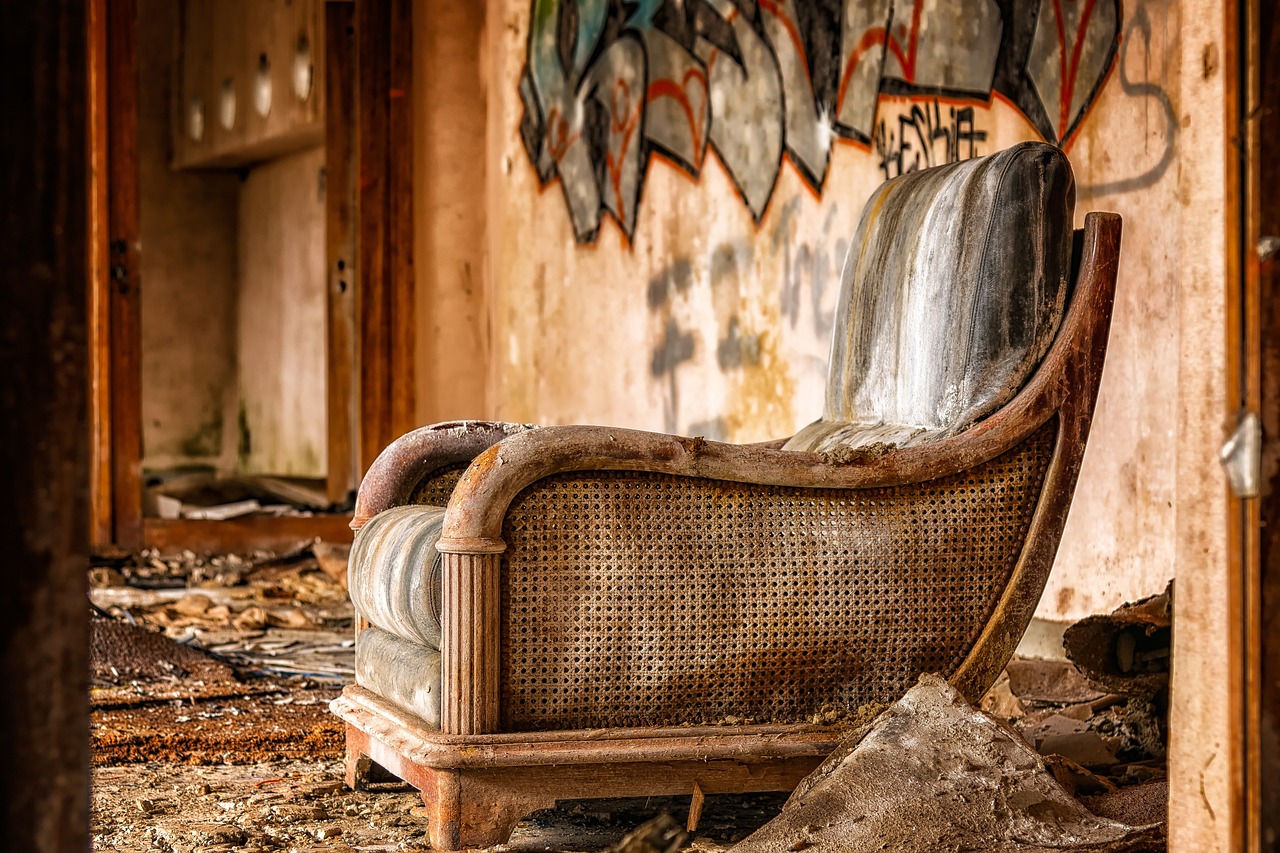
Choosing the Right Chairs
When it comes to transforming your home decor with DIY painted chairs, the first step is selecting the right chairs. You might think any old chair will do, but that's where you're mistaken! The right chair can make a world of difference in the final outcome of your project. Think about the materials, shapes, and even the existing decor in your space. A well-chosen chair not only enhances your decor but also reflects your unique style.
Consider the material of the chair. Wooden chairs are often the easiest to paint and can take on a variety of colors and finishes. Metal chairs, on the other hand, may require special preparation and paint types, such as spray paint designed for metals. Upholstered chairs can be a bit tricky, but with the right techniques, you can still achieve a stunning look. So, ask yourself: what vibe do you want to create? A rustic wooden chair painted in a soft pastel can evoke a cozy, farmhouse feel, while a sleek metal chair in bold red can bring modern flair to your space.
The shape of the chair is another important factor. Are you looking for something classic and elegant, or more modern and funky? A traditional armchair could be a great candidate for a vintage-inspired paint job, while a minimalist stool might lend itself well to a vibrant, contemporary design. Don't forget to think about how the chair will fit into your existing decor. For example, if your room features a lot of soft textures and warm colors, a chair painted in a complementary shade can tie everything together beautifully.
To help you visualize your options, here’s a quick comparison table:
| Chair Type | Best Material for Painting | Design Style |
|---|---|---|
| Wooden Chairs | Any type of paint | Rustic, Vintage, Modern |
| Metal Chairs | Spray paint for metal | Industrial, Contemporary |
| Upholstered Chairs | Fabric paint or spray | Cozy, Eclectic |
Ultimately, the key is to select chairs that not only appeal to your aesthetic but also fit the practical needs of your space. Imagine how satisfying it will be to sit on a chair that you’ve transformed with your own hands! So, take your time, explore your options, and choose wisely. After all, this is the foundation of your DIY project, and the right chair will set the stage for a stunning transformation.
- Can I paint any type of chair? - While most chairs can be painted, it's essential to consider the material and preparation needed for the best results.
- What type of paint should I use for wooden chairs? - Acrylic or chalk paint works well for wooden chairs, offering a durable and beautiful finish.
- Do I need to sand the chairs before painting? - Yes, sanding helps create a smooth surface for better paint adhesion.

Preparing Your Chairs for Painting
Before diving into the exciting world of DIY painted chairs, it's crucial to understand that proper preparation is the foundation of a successful project. Think of it as laying the groundwork before building a house; without a solid base, everything else can crumble. So, let’s roll up our sleeves and get those chairs ready for their colorful transformation!
The first step in preparing your chairs is cleaning them thoroughly. This might seem straightforward, but it’s essential to remove any dirt, oils, or previous finishes that could hinder the paint from adhering properly. For most chair surfaces, a simple mixture of soap and water works wonders. Just grab a sponge or cloth, dip it in the solution, and scrub away any grime. However, if your chairs are particularly dirty or greasy, you might need to step it up a notch.
When it comes to cleaning, the method you choose will depend on the material of your chairs. Here are a couple of effective cleaning methods:
- Using Soap and Water: This classic method is safe and effective for most surfaces. It’s as easy as it sounds—mix soap with warm water, and you’re good to go!
- Solvent-Based Cleaners: For those stubborn stains or sticky residues, solvent-based cleaners can be a game changer. Just be sure to use them in a well-ventilated area and follow the manufacturer's instructions to avoid any mishaps.
Once your chairs are squeaky clean, it’s time to tackle the next step: sanding. Sanding is vital for creating a smooth surface that allows paint to adhere better. Use a fine-grit sandpaper to gently sand down the surfaces of your chairs, focusing on any rough spots or areas with previous paint. Think of sanding as giving your chairs a little spa treatment; they’ll come out feeling fresh and ready for their makeover!
After sanding, don’t forget to wipe down the chairs with a damp cloth to remove any dust particles. This step is often overlooked but is crucial for achieving that flawless finish. And now, we arrive at priming—an essential step that many DIYers tend to skip. Priming helps to seal the surface and provides a uniform base for your paint, ensuring that the final color pops beautifully.
When selecting a primer, consider the material of your chairs. If they’re made of wood, a water-based primer is usually the best choice as it dries quickly and is easy to clean up. For metal chairs, look for a primer specifically designed for metal surfaces to prevent rust and ensure durability. Applying primer might seem like an extra step, but trust me, it’s worth it for that professional look!
In summary, preparing your chairs for painting involves a few key steps: cleaning, sanding, and priming. Each step plays a vital role in ensuring that your painted chairs not only look stunning but also stand the test of time. So, take your time with these preparations, and you’ll be rewarded with beautiful, eye-catching chairs that will elevate your home decor.
Q: Do I really need to prime my chairs before painting?
A: Yes! Priming helps the paint adhere better and provides a more even finish. It’s especially important for surfaces that have never been painted before.
Q: What type of sandpaper should I use?
A: A fine-grit sandpaper (around 220 grit) is ideal for most surfaces. It will smooth out imperfections without damaging the material.
Q: Can I skip cleaning if the chairs look clean?
A: It’s best to clean them regardless of appearance. Oils and dirt can be invisible but may affect paint adhesion.

Cleaning Techniques
When it comes to giving your chairs a fresh, vibrant look, the first step is cleaning. Proper cleaning techniques are essential for removing dirt, grease, and oils that can prevent paint from adhering properly. Think of your chairs as a blank canvas; the cleaner they are, the better the paint will stick, and the more beautiful your final piece will be. So, let’s dive into some effective cleaning methods that cater to different materials!
To start, a simple yet effective method for cleaning most chair surfaces is the soap and water solution. This method is safe and easy, making it a great first step. Just mix a few drops of mild dish soap with warm water, grab a sponge or cloth, and start scrubbing away the grime. This technique works wonders for wooden, plastic, and metal chairs, but make sure to rinse thoroughly with clean water to avoid leaving any soap residue behind.
However, if your chairs are particularly dirty or have stubborn stains, you might want to reach for solvent-based cleaners. These products are designed to tackle tougher grime and can be incredibly effective. Just remember, safety first! Always use these cleaners in a well-ventilated area and wear appropriate protective gear, such as gloves and a mask. Apply the cleaner with a cloth, following the manufacturer's instructions, and be sure to test it on a small, inconspicuous area first to ensure it doesn’t damage the finish of your chairs.
Here’s a quick comparison of cleaning methods for different chair materials:
| Material | Recommended Cleaning Method |
|---|---|
| Wood | Soap and water; follow with a wood cleaner |
| Plastic | Soap and water; can use vinegar for tougher stains |
| Metal | Soap and water; solvent-based cleaners for rust |
| Upholstery | Vacuum first, then use fabric cleaner |
Once you’ve cleaned your chairs, it’s important to let them dry completely before moving on to the next steps in your DIY painting project. Think of it as giving your chairs a spa day; they deserve to be pampered and prepared for their transformation! With clean, dry chairs, you’re now ready to sand and prime, setting the stage for a fabulous finish.
- What should I use to clean my wooden chairs? A mixture of soap and water works well, followed by a specialized wood cleaner for extra shine.
- Can I use bleach to clean my plastic chairs? While bleach can be effective, it's best to use a diluted solution or vinegar to avoid damaging the plastic.
- How do I know if a solvent-based cleaner is safe for my chairs? Always test the cleaner on a small, hidden area first to ensure it doesn’t harm the finish.

Using Soap and Water
When it comes to preparing your chairs for a vibrant makeover, is often the most straightforward and effective method. This classic combination is not only safe for most surfaces but also incredibly easy to apply, making it the perfect first step in your DIY painting journey. Imagine you’re giving your chairs a refreshing bath, washing away years of grime and oils that could hinder your paint from adhering properly. Just like how we need to clean our faces before applying makeup, your chairs deserve the same treatment!
To get started, gather your supplies. You’ll need:
- Warm water
- Gentle dish soap
- A soft cloth or sponge
- A bucket
Here’s how to do it:
- Mix the Solution: In your bucket, combine a few drops of dish soap with warm water. You want it to be bubbly but not overly so.
- Soak Your Cloth: Dip your cloth or sponge into the soapy water, wring it out to remove excess moisture, and get ready to scrub!
- Wipe Down the Chairs: Start at the top and work your way down. Pay special attention to areas that are usually touched, like the arms and the seat. You’ll be amazed at how much dirt comes off!
- Rinse and Dry: After scrubbing, rinse the cloth in clean water and wipe down the chairs again to remove any soap residue. Finally, dry the chairs with a clean towel or let them air dry completely before moving on to sanding and priming.
Using soap and water not only cleans your chairs but also prepares them for the next steps in your painting project. It’s a simple yet effective way to ensure that your vibrant new color will adhere beautifully, giving your chairs the stunning transformation they deserve. So, don’t skip this step—think of it as the foundation for your masterpiece!
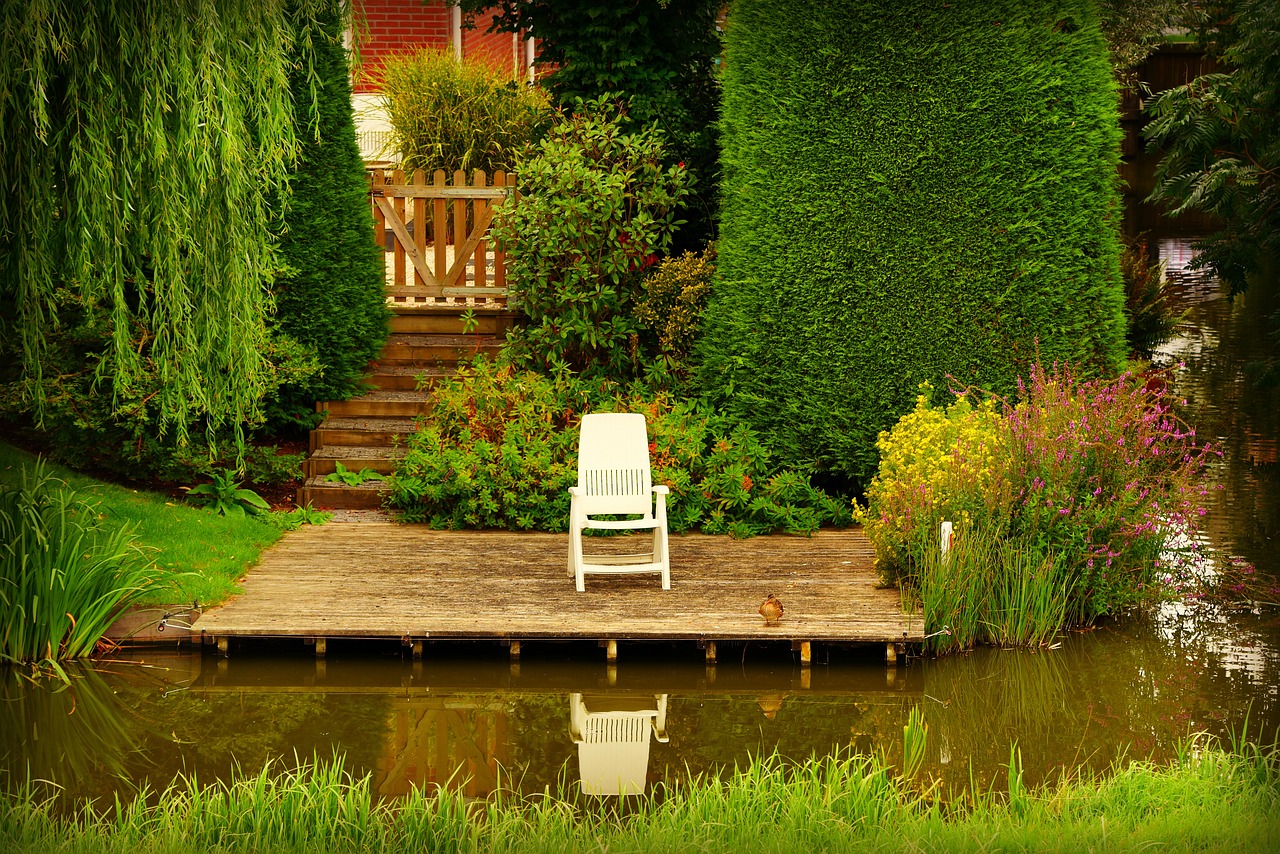
Solvent-Based Cleaners
When it comes to tackling tough grime and stubborn stains on your chairs, can be your best friend. These powerful cleaning agents are specifically formulated to break down oils, grease, and other difficult residues that soap and water alone might struggle to remove. However, using them requires a bit of caution to ensure both your safety and the integrity of your chair's material.
Before diving into the cleaning process, it's essential to understand the different types of solvent-based cleaners available. Some common options include acetone, mineral spirits, and denatured alcohol. Each of these has its own unique properties and uses:
| Cleaner Type | Best For | Notes |
|---|---|---|
| Acetone | Nail polish, adhesives | Strong and fast-acting; use in well-ventilated areas. |
| Mineral Spirits | Oil-based paints, varnishes | Less potent; safer for most surfaces. |
| Denatured Alcohol | Wood finishes, stains | Evaporates quickly; great for prepping surfaces. |
When using solvent-based cleaners, remember to follow these simple steps for safe and effective cleaning:
- Ventilation: Always work in a well-ventilated area. Open windows and use fans to ensure proper airflow.
- Test First: Before applying the cleaner to the entire chair, test it on a small, inconspicuous area to ensure it won’t damage the finish.
- Protect Yourself: Wear gloves and a mask to protect your skin and lungs from harsh chemicals.
- Application: Use a clean cloth or sponge to apply the cleaner, gently scrubbing the surface to lift dirt and grime.
Once you've cleaned your chairs with solvent-based cleaners, allow them to dry completely before moving on to the next steps in your DIY project. This ensures that any remaining residue evaporates and that your paint will adhere properly. Remember, the goal is to create a beautiful finish that not only looks great but also stands the test of time.
Q: Are solvent-based cleaners safe for all types of chairs?
A: While solvent-based cleaners are effective, they may not be suitable for every material. Always check the manufacturer's recommendations and test on a small area first.
Q: How do I know if a cleaner is solvent-based?
A: Check the label for ingredients. If it contains chemicals like acetone or mineral spirits, it’s solvent-based.
Q: Can I use solvent-based cleaners indoors?
A: It’s best to use them outdoors or in well-ventilated areas to avoid inhaling fumes.

Sanding and Priming
This article explores creative techniques and tips for transforming ordinary chairs into vibrant, eye-catching pieces that enhance your home decor while reflecting your personal style.
Selecting the perfect chairs for your DIY project is crucial. Consider materials, shapes, and existing decor to ensure that your painted chairs will complement your space beautifully.
Proper preparation is essential for a successful paint job. Learn how to clean, sand, and prime your chairs to achieve a smooth and lasting finish.
Sanding and priming are vital steps in the painting process that can dramatically affect the final look of your chairs. Think of sanding as the foundation of a house; without a solid base, everything else can crumble. Sanding helps to create a smooth surface by removing imperfections and old finishes, which allows the paint to adhere better. This step is crucial, especially if you're working with surfaces that have been previously painted or varnished. Use a medium-grit sandpaper (around 120 grit) to start, and then finish with a finer grit (220 grit) for a silky smooth finish. Remember, the goal here is to create a surface that the paint can grab onto, ensuring a long-lasting finish.
Once you've sanded your chairs, the next step is priming. Priming acts like a protective barrier and enhances the paint's adhesion, especially on porous surfaces like wood. It also helps to prevent any stains or colors from bleeding through your topcoat. When selecting a primer, consider using a water-based primer for easy cleanup and low odor. Apply the primer evenly with a brush or roller, and allow it to dry completely. If you're working with particularly dark or vibrant colors, a tinted primer can be a game-changer, helping to achieve a true color payoff with fewer coats.
Here’s a quick overview of the tools you might need for sanding and priming:
| Tool | Purpose |
|---|---|
| Sandpaper | To smooth the surface of the chair |
| Sanding Block | To ensure even pressure while sanding |
| Primer | To prepare the surface for paint |
| Brush/Roller | For applying primer evenly |
Choosing the right type of paint is key to a successful project. Explore different paint options, including finishes and colors, that suit your style and chair material.
Different paint types serve various purposes. Learn about acrylic, chalk, and spray paints, and how each can affect the final look of your chairs.
Selecting the right color can transform your space. Discover tips for choosing colors that enhance your decor while reflecting your personality.
Explore various painting techniques that can add unique textures and styles to your chairs. From brush strokes to stenciling, there are numerous ways to express creativity.
Each painting method has its advantages. Understand the pros and cons of brush painting versus spray painting to determine which technique suits your project best.
Adding stencils or patterns can elevate your design. Learn how to apply stencils effectively to create stunning visual interest on your chairs.
Once painted, your chairs need finishing touches to enhance durability and aesthetics. Discover the best sealants and protective coatings to ensure your chairs last.
Sealants protect your paint job from wear and tear. Explore different sealant options and how to apply them effectively for long-lasting results.
Enhancing comfort and style can be achieved by adding cushions or fabrics. Learn how to choose and attach these elements to your painted chairs.
- How long should I wait before applying a second coat of paint? It's generally best to wait at least 24 hours, but check the paint can for specific instructions.
- Can I use regular wall paint on chairs? While you can, it's better to use paint specifically designed for furniture to ensure durability.
- What if my chairs are made of metal or plastic? Be sure to use a primer and paint that are suitable for those materials for the best results.

Selecting the Right Paint
Choosing the right type of paint is absolutely key to a successful DIY project. The paint you select can make or break your efforts to transform ordinary chairs into stunning, vibrant pieces of art that not only enhance your home decor but also reflect your personal style. So, how do you navigate the myriad of options available? It's simpler than you might think! First, consider the material of your chairs. Different materials require different types of paint for optimal adhesion and durability.
For instance, if you're working with wooden chairs, acrylic paint is often a fantastic choice due to its versatility and ease of use. On the other hand, if you're painting metal chairs, you might want to opt for a spray paint designed specifically for metal surfaces. This ensures a smooth finish and prevents rust formation. To help you visualize the options, here’s a quick comparison of popular paint types:
| Type of Paint | Best For | Finish | Durability |
|---|---|---|---|
| Acrylic | Wood | Matte to Glossy | Moderate |
| Chalk Paint | Wood, Distressed Look | Matte | Low to Moderate |
| Spray Paint | Metal, Plastic | Glossy | High |
When it comes to finishes, the choice can affect not just the appearance but also the functionality of your painted chairs. A glossy finish can add a touch of elegance and is easier to clean, making it ideal for dining chairs. Meanwhile, a matte finish can give a more rustic and cozy feel, perfect for accent pieces in your living room. However, keep in mind that matte finishes might show wear and tear more quickly than their glossy counterparts.
Now, let’s talk about color selection. The right color can completely transform your space and evoke various moods. Are you looking for something bold and vibrant to make a statement, or do you prefer soft, muted tones for a calming effect? A great tip is to consider your existing decor. Look around your room and identify colors that are already present. This can help you choose a paint color that complements your surroundings.
Don’t forget to test your selected color! Grab some sample pots and apply swatches on your chair or a similar surface. Observe how the paint looks at different times of the day, as natural light can dramatically change the appearance of colors. This small step can save you from making a costly mistake!
In conclusion, selecting the right paint involves understanding the materials, finishes, and colors that will work best for your specific project. With a little research and testing, you can ensure your painted chairs not only look amazing but also stand the test of time, adding that perfect pop of color to your home.
- What type of paint is best for outdoor chairs?
For outdoor chairs, use paint that is specifically formulated for exterior surfaces, such as weather-resistant spray paint or acrylic paint with UV protection. - Can I use regular house paint on furniture?
While you can use regular house paint, it’s better to opt for paints designed for furniture to ensure better adhesion and durability. - How do I clean my painted chairs?
Use a soft cloth and mild soap solution to clean your painted chairs. Avoid harsh chemicals that could damage the paint.

Types of Paint
When it comes to painting your chairs, the type of paint you choose can make a world of difference. It's not just about color; it’s about durability, finish, and how well it adheres to the material of your chairs. Here’s a breakdown of some popular types of paint you might consider for your DIY project:
- Acrylic Paint: This water-based paint is a favorite among DIY enthusiasts due to its versatility and ease of use. Acrylic paint dries quickly, is available in a vast array of colors, and can be used on various surfaces including wood and metal. Plus, it’s easy to clean up with soap and water!
- Chalk Paint: If you’re looking for a matte finish and a vintage vibe, chalk paint is your go-to option. It adheres well to most surfaces without the need for priming, making it perfect for a quick transformation. Chalk paint can also be distressed for a shabby chic look, adding character to your chairs.
- Spray Paint: For those hard-to-reach areas or intricate designs, spray paint is incredibly effective. It provides a smooth finish without brush strokes, but you need to be cautious about overspray. Always use it in a well-ventilated area and consider wearing a mask to protect yourself from fumes.
Each type of paint has its unique characteristics that cater to different styles and needs. For example, if you want a high-gloss finish, acrylic paint is ideal, while chalk paint is perfect for a more rustic aesthetic. It’s essential to consider the material of your chairs as well; some paints adhere better to certain surfaces than others. For instance, plastic chairs may require a specific type of spray paint designed for plastic to ensure lasting results.
Moreover, you should also think about the environment where your chairs will be used. If they are going to be placed outdoors, you’ll need a paint that can withstand the elements. Look for exterior-grade paints that are resistant to fading, peeling, and mildew. On the other hand, if your chairs will be indoors, a regular interior paint will suffice.
In summary, choosing the right type of paint is crucial for achieving the desired look and longevity of your DIY painted chairs. Take your time to explore your options, and don’t hesitate to experiment with different finishes and colors to find the perfect match for your home decor. Remember, the right paint can turn an ordinary chair into a stunning centerpiece that reflects your personal style!
Q: Can I use regular wall paint on my chairs?
A: While you can use wall paint, it’s not recommended for furniture as it may not adhere well and could chip easily. It's better to use paint specifically designed for furniture.
Q: How do I know which paint is best for outdoor chairs?
A: Look for paints labeled as exterior or outdoor paint. These are formulated to withstand weather conditions and UV rays, ensuring your chairs remain vibrant and intact.
Q: Do I need to sand my chairs before painting?
A: Yes, sanding helps to create a smooth surface for the paint to adhere to, especially if the chairs have a glossy finish. It also removes any old paint or imperfections.
Q: How long does it take for the paint to dry?
A: Drying times vary by paint type, but most acrylic and chalk paints dry to the touch within 1-2 hours. However, it's best to wait 24 hours before using the chairs to ensure the paint is fully cured.
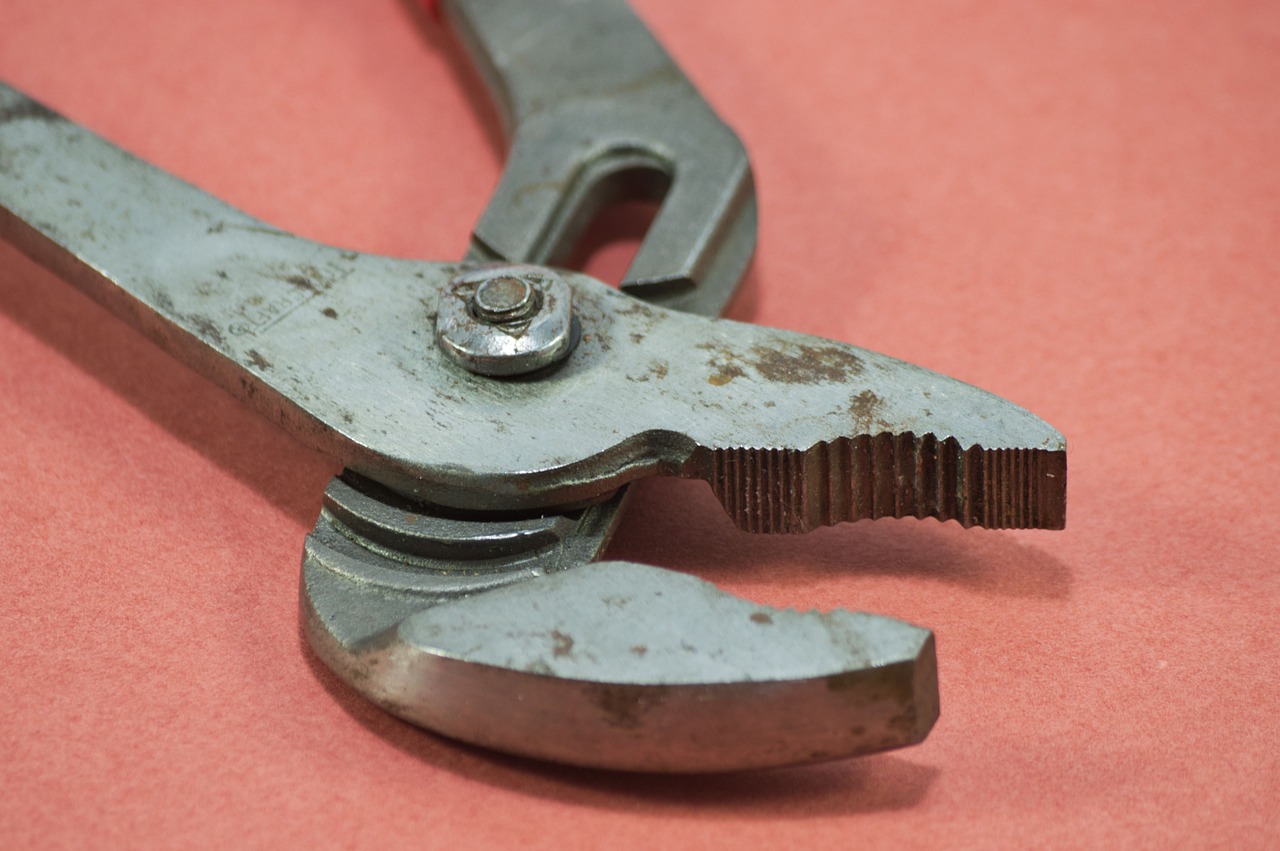
Color Selection
Choosing the right color for your painted chairs is like selecting the perfect outfit for a special occasion—it can make all the difference! The color you choose not only defines the aesthetic of your space but also reflects your personal style. So, how do you go about picking that perfect hue? First, consider the existing color palette in your home. Are your walls painted in soft pastels, or do you have bold, vibrant colors dominating the space? Aligning your chair color with your room's overall theme can create a harmonious look that feels intentional and well-designed.
Next, think about the mood you want to evoke. Colors can have a profound psychological effect on our emotions. For instance, warm colors like reds and oranges can create a sense of energy and excitement, while cool colors like blues and greens tend to be calming and serene. If you want your chairs to be a focal point, consider going for a striking contrast against your walls or other furniture. On the other hand, if you prefer a more subtle approach, opt for shades that complement rather than compete with your existing decor.
Another fun way to approach color selection is by using color theory. This can help you understand how different colors interact with one another. Here are a few color combinations that can inspire you:
- Complementary Colors: Colors opposite each other on the color wheel, like blue and orange, create a vibrant contrast.
- Analogous Colors: Colors next to each other, such as blue, blue-green, and green, offer a more harmonious and soothing look.
- Monochromatic Schemes: Using different shades of the same color can add depth while keeping things cohesive.
Lastly, don't forget to test your color choices! Paint a small section of your chair and observe how it looks in different lighting throughout the day. Sometimes, a color can appear entirely different in natural light versus artificial light. By taking these steps, you’ll ensure that the color you choose will not only enhance your decor but also resonate with your personal style. So, grab those paint swatches and get ready to unleash your creativity!
Q: How do I choose a color that matches my existing decor?
A: Start by analyzing the colors already present in your space. You can use a color wheel to find complementary or analogous colors that will enhance your decor.
Q: Should I consider the psychology of colors when selecting paint?
A: Absolutely! Different colors evoke different emotions. Consider the mood you want to create in the room when selecting your chair colors.
Q: Can I mix different colors on the same chair?
A: Yes! Mixing colors can create a unique and personalized look. Just make sure the colors complement each other to maintain visual harmony.
Q: How do I ensure the paint looks good in different lighting?
A: Test your color choices by painting a small area and observing it in different lighting conditions throughout the day before committing to the final color.

Techniques for Painting Chairs
When it comes to painting chairs, the techniques you choose can make all the difference between a project that looks DIY and one that appears professionally done. The beauty of painting chairs lies in the endless possibilities for creativity, allowing you to express your personal style. Are you ready to dive into the world of chair painting? Let's explore various techniques that can transform your ordinary chairs into extraordinary pieces.
One of the first decisions you'll need to make is whether to use brush painting or spray painting. Each method has its own set of advantages and challenges. Brush painting gives you more control over the application, allowing you to focus on details and hard-to-reach areas. It’s perfect for intricate designs or when you want to apply multiple colors. On the other hand, spray painting can cover large surfaces quickly and offers a smooth finish that’s hard to achieve with a brush. However, it requires a steady hand and proper ventilation to avoid overspray on unwanted areas. Consider your comfort level and the specific needs of your project when making this choice.
Another exciting technique to consider is stenciling. This method allows you to add unique patterns or designs to your chairs, creating a stunning visual interest that can elevate the overall look. Imagine a simple chair transformed with a geometric pattern or floral design! To use stencils effectively, make sure to secure them firmly to the chair surface to prevent paint from bleeding underneath. You can use a sponge brush or a spray can for application, depending on the effect you wish to achieve. Just remember to practice on a scrap piece of wood first to get the hang of it!
For those who love a more artistic touch, consider techniques like ombre or color blocking. Ombre involves blending two or more colors seamlessly from light to dark, creating a beautiful gradient effect. This technique can be especially striking on chair backs or legs. Color blocking, on the other hand, involves applying bold, solid colors in distinct sections, which can create a modern and playful vibe. Both techniques allow for a high level of creativity and can be tailored to fit any decor style.
As you embark on your painting journey, don't forget to experiment with textures! Consider using a textured paint or applying techniques like sponging or rag rolling to add depth to your chairs. These methods can create a unique look that sets your chairs apart from the rest. Remember, the key to a successful paint job is to embrace the process and have fun with it! After all, each brush stroke is a reflection of your personality.
To wrap up this section, remember that the technique you choose should align with your vision for the final product. Whether you opt for the precision of brush painting, the efficiency of spray painting, or the creativity of stenciling, each method offers a unique way to breathe new life into your chairs. So grab your paint, unleash your creativity, and get ready to transform your furniture into a vibrant expression of your style!
- What type of paint is best for wooden chairs? Acrylic or chalk paint is often recommended for wooden chairs due to their durability and ease of use.
- How long does the paint take to dry? Drying times can vary, but most paints will be touch-dry within 1-2 hours and fully cured in about 24 hours.
- Can I paint over old paint? Yes, but it’s essential to prepare the surface by cleaning, sanding, and possibly priming before applying new paint.
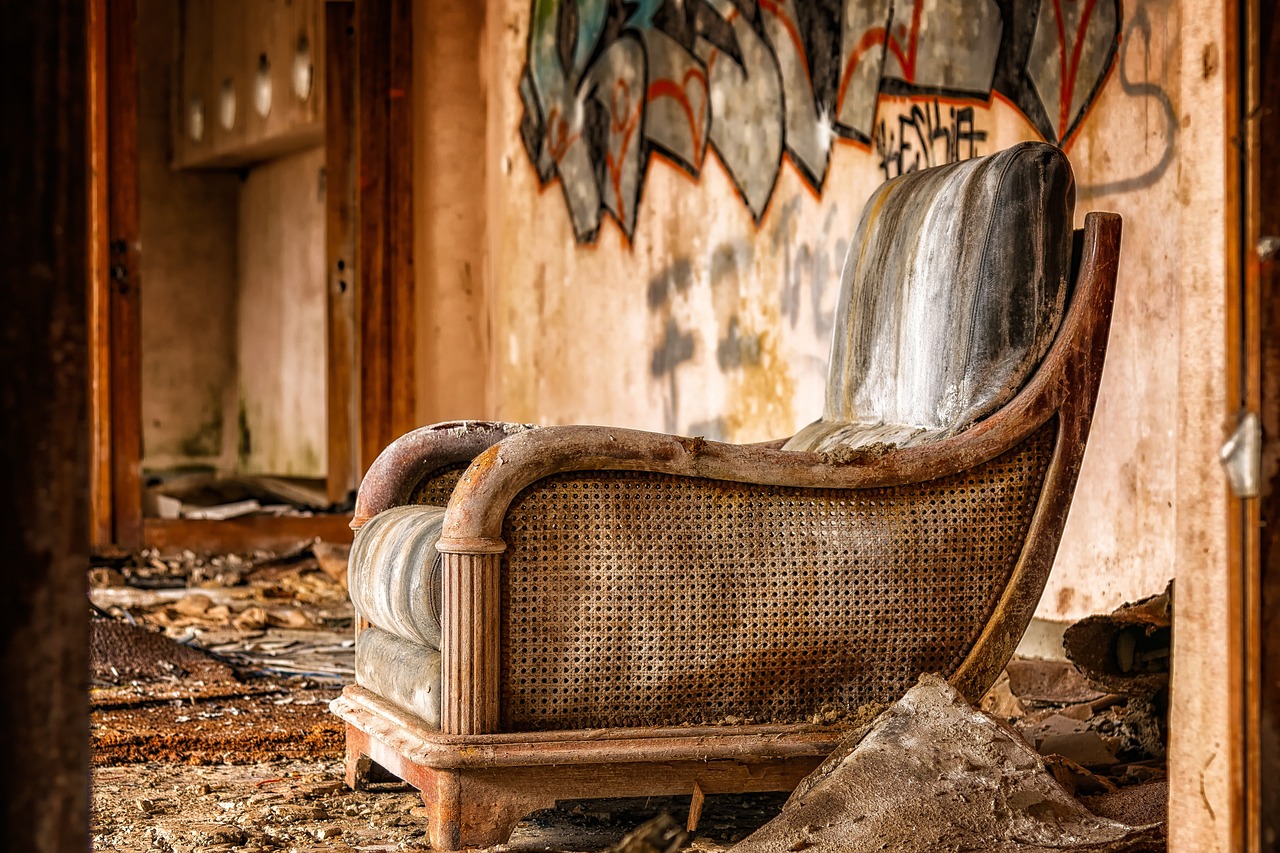
Brush vs. Spray Painting
When it comes to painting your chairs, choosing between brush painting and spray painting can feel like a daunting decision. Each method has its own unique set of advantages and disadvantages that can significantly impact the final look of your project. So, which one should you choose? Let's break it down!
Brush painting is often seen as the traditional approach. It allows for a high level of control, making it ideal for intricate designs and detailed work. If you're aiming for a more textured finish or want to highlight the wood grain on your chairs, a good quality brush can help you achieve that. Additionally, brush painting is generally more forgiving when it comes to touch-ups. If you accidentally nick a spot, simply grab your brush and fix it. However, it does require a bit more time and effort, especially if you're working on multiple chairs.
On the other hand, spray painting is all about speed and efficiency. If you have a lot of chairs to paint, or if you're looking for a smooth, even finish, spray painting might be the way to go. It can cover large areas quickly and is less likely to leave visible brush strokes. However, it does come with its own challenges. For instance, you need to be cautious about overspray, which can create a mess and waste paint. Plus, achieving precision around edges and corners can be tricky.
To help you visualize the differences, here’s a quick comparison:
| Feature | Brush Painting | Spray Painting |
|---|---|---|
| Control | High | Moderate |
| Speed | Slower | Fast |
| Finish | Textured | Smooth |
| Touch-ups | Easy | Challenging |
| Mess | Less | More |
Ultimately, the choice between brush and spray painting depends on your specific project needs and personal preference. If you enjoy the process of painting and want to take your time, brush painting can be a rewarding experience. However, if you’re looking for efficiency and a sleek finish, spray painting might be your best bet. Whichever method you choose, remember to take your time and enjoy the transformation of your ordinary chairs into vibrant, eye-catching pieces!
Here are some common questions that often arise when deciding between brush and spray painting:
- Can I use both methods on the same chair? Absolutely! You can use spray paint for a base coat and then touch up details with a brush.
- Which method is better for beginners? Brush painting may be easier for beginners, as it allows for more control and less risk of overspray.
- How do I prevent drips when spray painting? Keep the spray can at a consistent distance from the surface and apply multiple thin coats rather than one thick coat.

Stenciling and Patterns
Stenciling is a fantastic way to add a unique flair to your painted chairs, allowing you to unleash your creativity and personal style. Imagine transforming a plain chair into a stunning focal point with just a few strokes of a brush! The beauty of stenciling lies in its versatility; you can create anything from intricate designs to bold geometric patterns that can elevate the aesthetic of any room.
Before you dive into stenciling, it’s essential to choose the right stencil that resonates with your vision. There are countless options available, from floral motifs to abstract shapes. You can purchase pre-made stencils or even create your own using materials like cardboard or plastic sheets. The key is to select a design that complements the overall decor of your space while showcasing your personality.
Once you have your stencil, prepare your workspace. Lay down some drop cloths to protect the surrounding area, and ensure your chairs are fully dried and cured from the initial paint job. It’s crucial to secure the stencil firmly onto the chair’s surface to prevent any paint bleed. You can use painter’s tape or adhesive spray to keep it in place while you work. This step can make all the difference in achieving clean, crisp lines.
When it comes to applying the paint, consider using a pouncing technique with a stencil brush. This method involves dabbing the brush up and down instead of sweeping it across the stencil. It helps to control the amount of paint used, minimizing the risk of smudges and ensuring that your patterns turn out sharp and defined. Remember, less is often more! Start with a small amount of paint and gradually build up the color to achieve the desired intensity.
After you've completed your stenciling, take a moment to step back and admire your handiwork. The patterns can create a beautiful contrast against the base color of the chair, making it a true statement piece. If you want to add an extra layer of interest, consider using multiple stencils in different colors or overlapping designs for a more dynamic look.
Finally, once your stenciled chairs are completely dry, don't forget to seal your masterpiece. A clear sealant will protect your design from wear and tear while enhancing the vibrancy of the colors. This step ensures that your stenciled patterns remain as stunning as the day you painted them.
In summary, stenciling and patterns can breathe new life into your chairs, making them not just functional pieces of furniture but also works of art. So gather your materials, let your imagination run wild, and get ready to create something truly special!
- What type of paint should I use for stenciling? Acrylic paint is often recommended for stenciling on furniture because of its quick drying time and durability.
- Can I stencil on fabric chairs? Yes, you can stencil on fabric chairs using fabric paint or textile medium mixed with acrylic paint for better adhesion.
- How do I clean my stencils after use? Clean your stencils immediately after use with warm soapy water to prevent paint from drying and ruining the design.
- Can I use multiple colors in one stencil design? Absolutely! Layering colors can create depth and dimension, making your stenciled design even more eye-catching.

Finishing Touches
After pouring your heart and soul into painting your chairs, the are what will truly make them shine. This is where you can elevate your hard work from a simple DIY project to a stunning centerpiece in your home. Think of it as the icing on the cake; it’s the final detail that ties everything together and ensures your chairs not only look great but also last for years to come.
First and foremost, applying a good quality sealant is essential. Sealants act like a protective shield over your paint job, guarding against scratches, spills, and general wear and tear. When choosing a sealant, consider the type of paint you used. For instance, if you opted for chalk paint, a matte or satin sealant will enhance its vintage charm without compromising the finish. On the other hand, if you used acrylic paint, a glossy sealant can add a vibrant sheen that really pops.
Here’s a quick overview of popular sealant options:
| Sealant Type | Best For | Finish |
|---|---|---|
| Polyurethane | High durability | Glossy |
| Water-Based Sealant | Quick drying | Matte or Satin |
| Varnish | Outdoor use | Glossy |
Once you’ve chosen your sealant, applying it is straightforward. Use a clean brush or a foam roller to apply a thin, even coat. Be sure to follow the manufacturer's instructions regarding drying times and the number of coats needed for optimal protection. This step will not only enhance the durability of your chairs but also give them a polished, professional finish.
Next, let’s talk about comfort and style. Adding cushions or fabrics can dramatically change the look and feel of your painted chairs. Not only do cushions provide extra comfort, but they also allow you to introduce new colors and patterns that can complement or contrast with your chair’s paint job. When selecting fabrics, consider durability and ease of cleaning, especially if your chairs will see a lot of use.
To attach cushions, you can use simple ties or Velcro strips, which allow for easy removal when it’s time for washing. If you’re feeling particularly crafty, consider sewing your own cushion covers to match your decor perfectly. This personal touch can make your chairs feel even more unique and tailored to your space.
Finally, don’t underestimate the power of accessorizing. A well-placed throw blanket or decorative pillow can add a cozy vibe to your chairs, making them even more inviting. Think of your painted chairs as a canvas for your personal style; every detail counts!
- How long should I wait before applying a sealant? It's best to wait at least 24 hours after painting to ensure the paint is completely dry.
- Can I use outdoor paint for indoor chairs? Yes, outdoor paint is durable and can be used indoors, but it may have a stronger odor and longer drying time.
- What is the best way to clean my painted chairs? Use a mild soap and water solution for regular cleaning, and avoid harsh chemicals that can damage the paint.

Applying Sealants
Once you've poured your heart and soul into painting your chairs, it's time to give them the love they deserve by applying a sealant. This step is crucial for ensuring that your vibrant masterpiece withstands the test of time, resisting scratches, stains, and the inevitable wear and tear that comes with everyday use. Think of sealants as the protective armor for your painted chairs; without them, your hard work could fade away faster than you can say "DIY."
When selecting a sealant, you have a few options, each with its own set of advantages. Here are some popular choices:
- Polyurethane: This is a durable and water-resistant option, perfect for chairs that will see a lot of action. It comes in both oil-based and water-based varieties, with oil-based providing a richer finish and water-based offering a quicker drying time.
- Varnish: Varnish is another great choice, especially if you're looking for something that enhances the natural beauty of the paint while providing a solid protective layer. It’s typically available in gloss, semi-gloss, and matte finishes.
- Wax: For a softer finish, wax can be a lovely option. It gives a nice sheen but requires more frequent reapplication. It’s best suited for decorative chairs that won’t be used heavily.
Now that you know your sealant options, let’s talk about how to apply them effectively. First, ensure your painted chairs are completely dry; this is crucial because applying sealant too soon can lead to smudges or an uneven finish. Once dry, follow these steps:
- Prepare Your Workspace: Lay down a drop cloth to protect your floors and ensure good ventilation in your workspace.
- Choose the Right Tools: Use a high-quality brush or a foam applicator for even application. If you’re using spray sealant, make sure to hold the can about 12 inches away from the surface.
- Apply Evenly: Start at one end of the chair and work your way to the other, applying a thin, even layer of sealant. Avoid over-brushing, as this can create bubbles or streaks.
- Allow to Cure: After applying, let the sealant cure according to the manufacturer’s instructions. This is essential for achieving maximum durability.
Finally, remember that while sealants provide excellent protection, they’re not invincible. Regular maintenance, such as cleaning and reapplying sealant as needed, will keep your painted chairs looking fresh and vibrant for years to come. So, go ahead and give your chairs that protective finish—they’ll thank you for it!
Q: How long should I wait before applying sealant after painting?
A: It's best to wait at least 24 hours after the paint has dried completely before applying sealant. This ensures that the paint is fully cured and ready for protection.
Q: Can I use sealant on fabric-covered chairs?
A: Sealants are generally not recommended for fabric-covered chairs. Instead, consider using a fabric protector spray designed for upholstery.
Q: How often should I reapply sealant?
A: Depending on the usage, you might need to reapply sealant every 1-3 years. If you notice signs of wear or fading, it’s time for a touch-up!
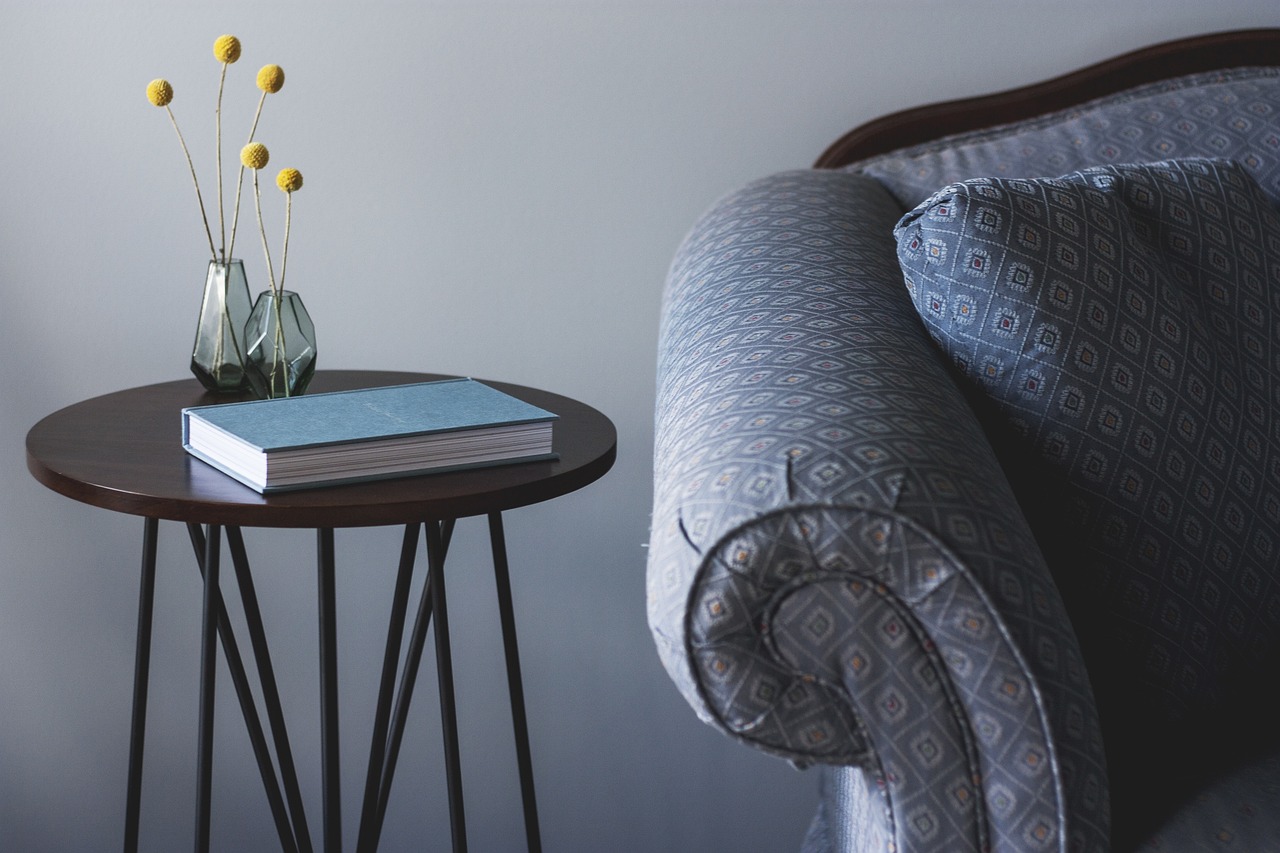
Adding Cushions or Fabrics
Once you've transformed your chairs with a fresh coat of paint, the next step to elevate their charm is by adding cushions or fabrics. Not only do these elements provide added comfort, but they also serve as a fantastic way to introduce new textures and colors into your space. Think of cushions as the cherry on top of your beautifully painted chairs—without them, your masterpiece feels a bit incomplete!
When selecting cushions, consider the style and color palette of your room. You want the cushions to complement your chairs and enhance the overall decor. For example, if you've painted your chairs in a bold, vibrant color, you might opt for cushions in more muted tones or subtle patterns to balance the visual impact. Conversely, if your chairs are more understated, don't hesitate to go wild with bright, patterned cushions that can create a fun contrast.
In addition to aesthetics, the material of your cushions matters significantly. Fabrics such as cotton or linen are breathable and comfortable, making them excellent choices for everyday use. If your chairs are placed in a high-traffic area, consider using outdoor fabrics that are durable and easy to clean. You can even mix and match different fabrics for a more eclectic look! Here’s a quick comparison of popular cushion materials:
| Material | Durability | Comfort | Maintenance |
|---|---|---|---|
| Cotton | Medium | High | Machine washable |
| Linen | Medium | High | Dry clean recommended |
| Outdoor Fabric | High | Medium | Easy to wipe clean |
Once you've chosen your cushions, it's time to think about how to attach them to your chairs. You can use simple ties or Velcro strips to keep them securely in place. This way, you won't have to worry about your cushions sliding off every time you sit down. Plus, if you want to switch up your decor seasonally, removable cushions make the process a breeze!
Lastly, don't forget about the size of your cushions. Oversized cushions can create a cozy, inviting feel, while smaller ones can add a more tailored look. Experiment with different sizes to see what works best for your chairs and your overall design scheme. Remember, the goal is to create a harmonious balance between comfort and style, making your painted chairs not just eye-catching, but also a joy to use.
- How do I choose the right size cushions for my chairs? Measure the seat of your chair before purchasing cushions to ensure they fit well without overwhelming the space.
- Can I use outdoor fabric cushions indoors? Absolutely! Outdoor fabrics are durable and often resistant to stains, making them great for indoor use as well.
- What is the best way to clean my cushions? Follow the care instructions on the cushion tags. Most cotton and polyester fabrics can be machine washed, while others may require spot cleaning or dry cleaning.
Frequently Asked Questions
- What type of chairs is best for painting?
When it comes to painting chairs, the best candidates are those made from wood, metal, or plastic. Wooden chairs are particularly great because they absorb paint well and can be sanded easily for a smooth finish. Metal chairs can also look stunning with a fresh coat of paint, while plastic chairs may require special paint to adhere properly.
- How do I prepare my chairs for painting?
Preparation is key to achieving a flawless finish. First, clean your chairs thoroughly using soap and water or a solvent-based cleaner for tougher grime. After cleaning, sand the surfaces to create a rough texture for better paint adhesion. Finally, apply a primer to ensure the paint sticks and lasts longer.
- What type of paint should I use for my chairs?
The type of paint you choose depends on the material of your chairs and the finish you desire. Acrylic paint is versatile and works well on most surfaces, while chalk paint gives a matte, vintage look. Spray paint is great for even coverage but may require more skill. Choose a paint that complements your style and the chair's material.
- Can I use stencils on my painted chairs?
Absolutely! Stenciling is a fantastic way to add unique designs to your chairs. Just make sure to secure the stencil properly and use a light hand when applying paint to avoid bleeding. This technique can really elevate your chair's appearance and make it a standout piece in your home.
- How can I protect my painted chairs?
To protect your newly painted chairs, applying a sealant is essential. Sealants create a barrier against scratches and stains, ensuring your paint job lasts longer. You can choose from a variety of sealants, such as polyurethane or varnish, depending on the finish you prefer. Just remember to follow the manufacturer's instructions for the best results.
- Should I add cushions to my painted chairs?
Adding cushions is a great way to enhance both comfort and style! You can choose fabrics that complement your chair's color and design, making your chairs not only more inviting but also a reflection of your personal taste. Just make sure to attach them securely so they stay in place while you sit.



















